Jerusalem Spurge, Woody Spurge,
Hebrew: חלבלוב מגובשש, Arabic: حلببون , حلبلوب المقدس
| Scientific name: | Euphorbia hierosolymitana Boiss. | |
| Synonym name: | Euphorbia thamnoides Boiss. | |
| Common name: | Jerusalem Spurge | |
| Hebrew name: | חלבלוב מגובשש | |
| Arabic name: | حلببون , حلبلوب المقدس | |
| Plant Family: | Euphorbiaceae, חלבלוביים |
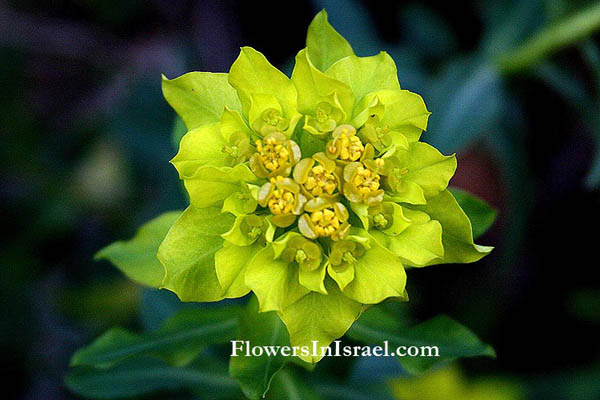
|
| Life form: | Chamaephyte, semi-shrub | |
| Stems: | 20-40 cm high, with dense branches, producing milky juice upon injury | |
| Leaves: | Alternate, entire | |
| Inflorescence: | Cyathium | |
| Flowers: | Yellowish green, with trilobed; green | |
| Fruits / pods: | Capsule | |
| Flowering Period: | January, February, March, April | |
| Habitat: | Batha, Phrygana | |
| Distribution: | Mediterranean Woodlands and Shrublands, Semi-steppe shrublands, Montane vegetation of Mt. Hermon | |
| Chorotype: | Mediterranean | |
| Summer shedding: | Perennating |
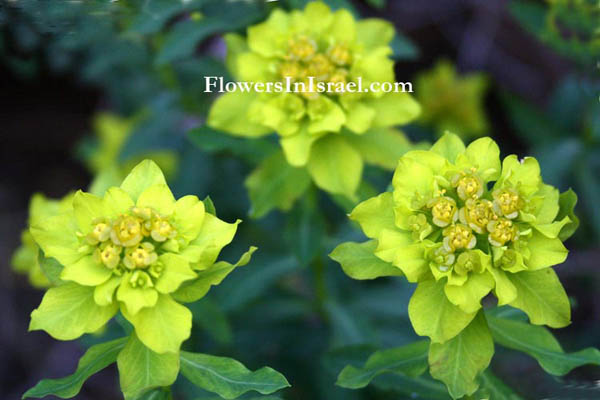
Derivation of the botanical name: Euphorbia, Εὔφορβος, Euphorbus, after the Numidian physician Euphorbus, physician to Juba II, King of Numidia and Mauretania, about the end of the first century BCE. In classical Greek ευφορβοσ (euphorbos) means well fed. hierosolymitana, hierosolyma, Jerusalem. thamnoides, bush-like. spurge from the Old French word espurgier (Latin expurgare), which means "to purge." The sap of many herbaceous Euphorbia species have traditionally been used as a purgative, or laxative.
See the list of Medicinal herbs in Israel, the parts used and their medical uses to treat various diseases. 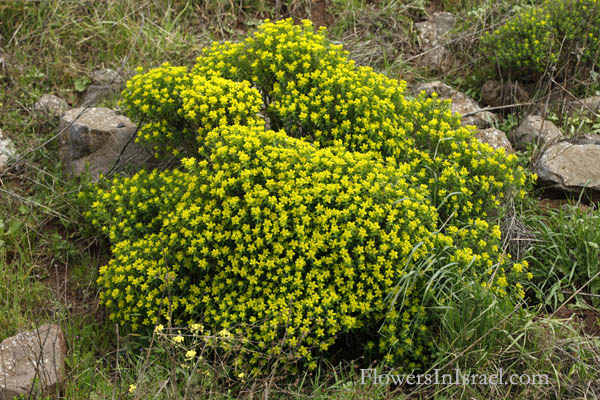
Location: Golan Heights 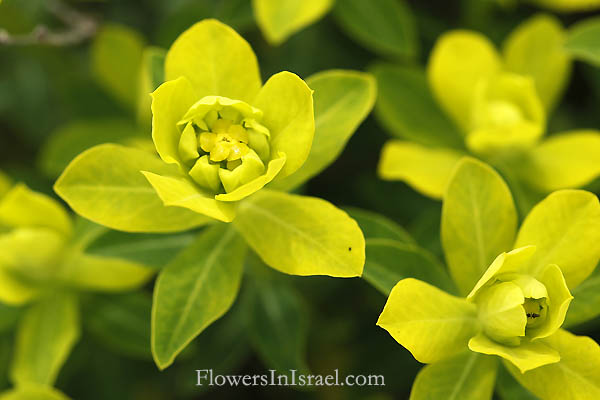
Location: Golan Heights 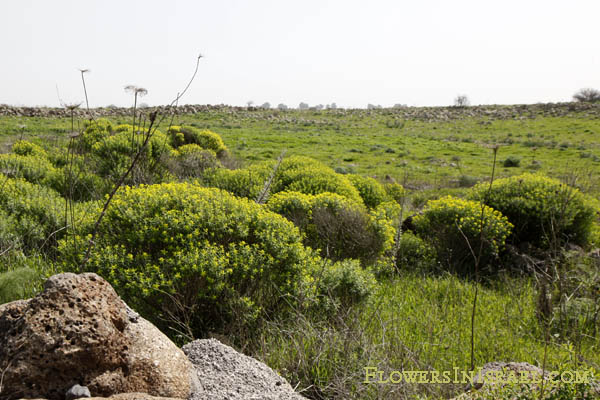
Location: Road 87, Yahudiya |